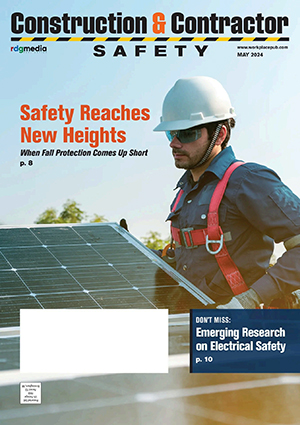ASME B20.1 2021 – Safety Standard for Conveyors and Related Equipment
“Until the ANSI/ASME B20.1 code for conveying devices was established, material conveying devices were held to the same ANSI/ASME A17 code requirements as passenger elevators. This made it nearly impossible for inclined and vertical reciprocating conveyor manufacturers to meet code standards and provide a competitively priced product. PFlow worked with state and local officials for nearly a decade to help author ANSI/ ASME B20.1. This code standard was instituted in 1981 and explicitly excludes any conveyors designed or installed for the movement of human beings. Excluding the movement of people allows conveying devices to be installed in places where passenger or freight elevators are prohibited and applies. As the vertical reciprocating conveyor founder and industry leader, PFlow can engineer a solution for your specific vertical material movement needs.” Chuck Cobb, VP-Sales, Marketing & Product Support. PFlow Industries, 414.352.9000, www.pflow.com
Conveyor systems are used in a wide range of industries and consumer applications to transport items quickly and efficiently from one location to another. Whether they are moving bulky items in a warehouse or packaging facility or sending suitcases from a plane to an airport carousel, conveyors are an indispensable piece of equipment in many different types of operations. They can move items of all shapes and sizes – including bulky ones, thus performing a task that would be difficult and potentially ergonomically injurious for humans to do. Among conveyor types there are:
- Mechanical or hydraulic vertical reciprocating conveyors (VRC) that can accommodate heavy loads and can be structured as complex multi-level, multi-directional systems that provide horizontal and vertical movement and offer flexible loading / unloading patterns.
- Belt conveyors that feature a moving belt turned by pulleys.
- Chute conveyors have metal slides down which packages slide to a lower level.
- Gravity roller conveyors that use cylindrical rollers and gravity to slide objects downward.
- Bucket conveyors scoop material with buckets attached to a belt or cable and carry it to a different location before dumping it out.
- Ball transfer conveyors allow objects to be moved in different directions, with the help of rows of metal balls that can turn and rotate.
- Trolley conveyors carry loads beneath them.
About the Standard
ASME B20.1-2021 was issued by The American Society of Mechanical Engineers (ASME), an engineering community association whose activities include developing codes and standards.
ASME B20.1-2021 applies to the design, construction, installation, maintenance, inspection and operation of conveyors and conveying systems in relation to hazards. The conveyors may be of the bulk material, package, or unit-handling types, where the installation is designed for permanent, temporary or portable operation.
With the exceptions noted below, this standard applies to all conveyor installations. It specifically excludes any conveyor designed, installed, or used primarily for the movement of people. It does, however, apply to certain conveying devices that incorporate within their supporting structure workstations or operator’s stations specifically designed for authorized operating personnel.
ASME B20.1-2021 does not apply to conveyors for which specific standards are already in effect, or to equipment such as industrial trucks, tractors, trailers, automatic guided vehicles, tiering machines (except pallet load tierers), cranes, hoists, power shovels, power scoops, bucket drag lines, trenchers, platform elevators designed to carry passengers or an operator, manlifts, moving walks, moving stairways (escalators), highway or railroad vehicles, cableways, tramways, dumbwaiters, material lifts, industrial scissor lifts, pneumatic conveyors, robots, or integral machine transfer devices. Some of the foregoing have specific standards.
The provisions of the standard apply to all equipment installed one year after the date of issuance (August 31, 2021).
History of the Standard
B20.1 was first published in 1947. It is current practice to revise it every three years, to accommodate evolving technology and design developments. The 2021 version revises section 1-3.9, “Gates and Enclosures” to indicate that enclosure height requirements apply “unless guarded by location.”
ASME B20.1-2018, the previous edition of this standard, contained the following changes from the previous edition:
- New provisions for tow conveyors:
- specifying warnings for when carts start automatically
- providing the means to allow the operator to disengage the tow pin from the conveyor pusher without being in front of the cart
- New definitions for mobile hopper railcar/hopper bottom truck unloader conveyor and hold-down wheels
- New guidelines for mobile hopper railcar/hopper bottom truck unloader conveyor
- New guidelines for electrified monorail conveyors used for assembly/inspection/testing processes
- Metric-equivalent values added throughout. An appendix includes specifications for design, installation, commissioning and periodic inspection of vertical reciprocating conveyors.
The next edition of this standard will be issued in 2024.
Conveyor Hazards
There are many hazards[1] associated with working at or near a conveyor, including:
- Rotating parts or pinch points can drag in, crush or entangle
- Confinement or assembly areas (the area between a fixed object and a moving one) can shear or crush
- Parts that slide or reciprocate (press down) can crush or shear
- Items can break or be ejected (thrown from) the conveyor system
- Items can fall off the conveyor
When choosing a conveyor system for a specific facility, it is vital to ensure that the conveyor manufacturer complies with ASME B20.1 – an indication that safety, in addition to quality, was a priority during the development process of the conveyor. The manufacturer should be able to assist you in evaluating the factors involved in conveyor usage, including the size and weight of the objects it will move and the space available for the conveyor system.
To purchase this standard, visit: https://tinyurl.com/2p8v7khy WMHS




